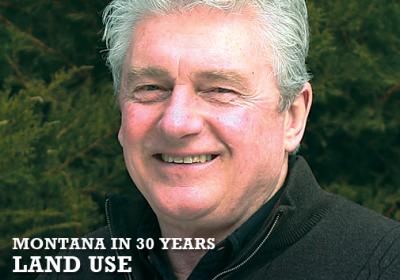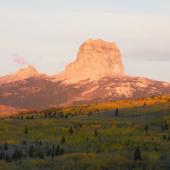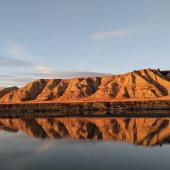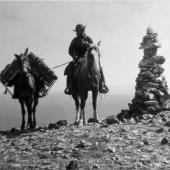Montana In 30 Years - Land Use
Director, School of Architecture and Land Use, Montana State University

What will be the major guiding principles for land use and growth in Montana over the next 30 years?
The State Legislature determines the guiding principles for land use and growth and, unfortunately, unless there is a radical change in belief systems, the dominant theme will continue to be rights over responsibility. The consequences will be that anything can go anywhere regardless of the social, cultural, physical, and economic impacts on everyone else. Undoubtedly there will be islands of exception — places where community values outweigh property rights.
More than 1/3 of all Montana land is federal or state “public land,” much of it with easy access for recreational purposes. Can anything happen over the next few decades to limit or diminish public land use policy?
Policies will undoubtedly change in response to the impacts of climate change. [Ed. Note: See Distinctly Montana Spring 2013 for our article on climate change in 30 years.]
What will Montana land use look like in 2043?
Very similar to what we see today. Those communities which have been migratory destinations will continue to see growth and prosperity if they retain the three qualities that attract and retain people — social offerings (entertainment venues and places to meet), openness (how welcoming a place is) and the area’s aesthetics (its physical beauty and green spaces). Historic downtowns that support a density and variety of activities are the most effective venue for social offerings. Perhaps the most difficult aspect of this triad to achieve is the collective decision to invest in beauty and green landscapes, for this goal requires public and private expenditures, which cannot easily be measured in terms of return on investment.
Will Montana “lead” or “follow” in the areas of land use and growth policy?
In general, Montana will “follow” and this is not a bad thing. We lack the volume of development to lead except perhaps in niche circumstances such as wildlife and stream preservation. In the broader perspective our citizens, governmental agencies, and private developers can learn from the mistakes and successes of others.
Will land use policy reflect Montana’s commitment to its preservation and nurturing of wildlife?
Yes. The majority of Montanans favor ignoring the economic rationale of capitalism. Perhaps the result of people choosing to settle in Montana primarily for its aesthetic beauty is intimately responsible for the preservation and nurturing of wildlife.
Where is the greatest need for restrictive land use policies?
In and around the most desirable communities in the State. The qualities that attracts us to these communities — social offerings, openness, and aesthetics — are also the most fragile because without doubt size matters. If we grow horizontally, in other words sprawling out from the center, then these qualities will inevitably be lost.
What will be the most important “protected” land uses, and where will there be land use opportunities for business and economic growth?
The most protected land uses must be our forests, agricultural production, wetlands, trails, and streams. Infill and adaptive reuse of existing structures offer the greatest opportunity for successful development in terms of community-wide success. This strategy should be promoted with local government incentives. For example high impact fees should be charged for sprawl and no impact fees for infill and adaptive reuse.
Cities and towns in Montana have struggled with growth policies and plans. What key elements will be reflected in “managed growth” in 30 years?
Foremost would be the decision to actually guide growth rather than simply accommodating growth. Communities must adopt a “vision” of the community they want to be. What does the community want to preserve from the past, celebrate today, and aspire to in the future?
How will climate change factor into land use policy in 2043?
Here are the strategies that should dominate responses to climate change: create compact, walkable, bike-able cities with public transportation, water conservation, biodiversity corridors, native landscapes, rain gardens to minimize water runoff, and street configurations that maximize solar access as well as site plans that maximize cross ventilation.
How will agricultural and ranch land be affected by land use policy?
Unless communities make a significant commitment to preservation and compensation, sprawl will remain the dominant policy affecting agricultural and ranch land use. The use of transfer of development rights (TDRs) offers a viable alternative. A community must determine its boundaries and then require development rights to be purchased from the agricultural and ranch communities to be utilized for development within the community’s boundaries.












Leave a Comment Here